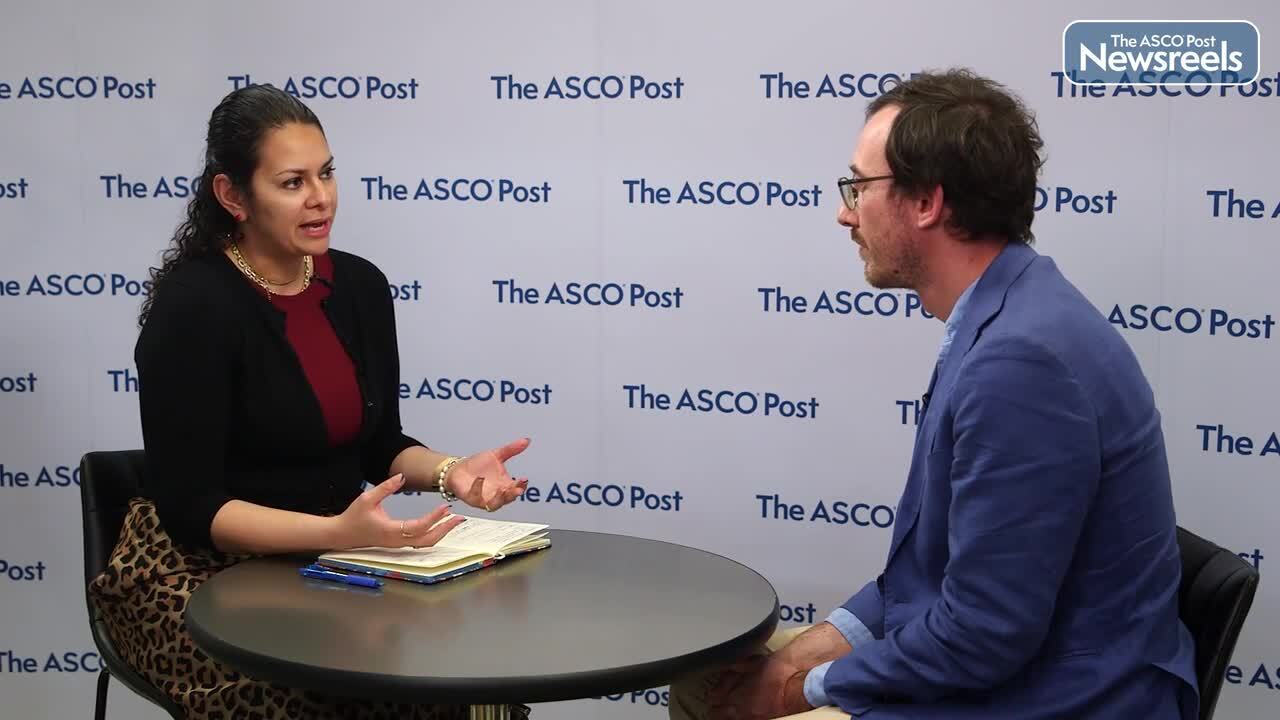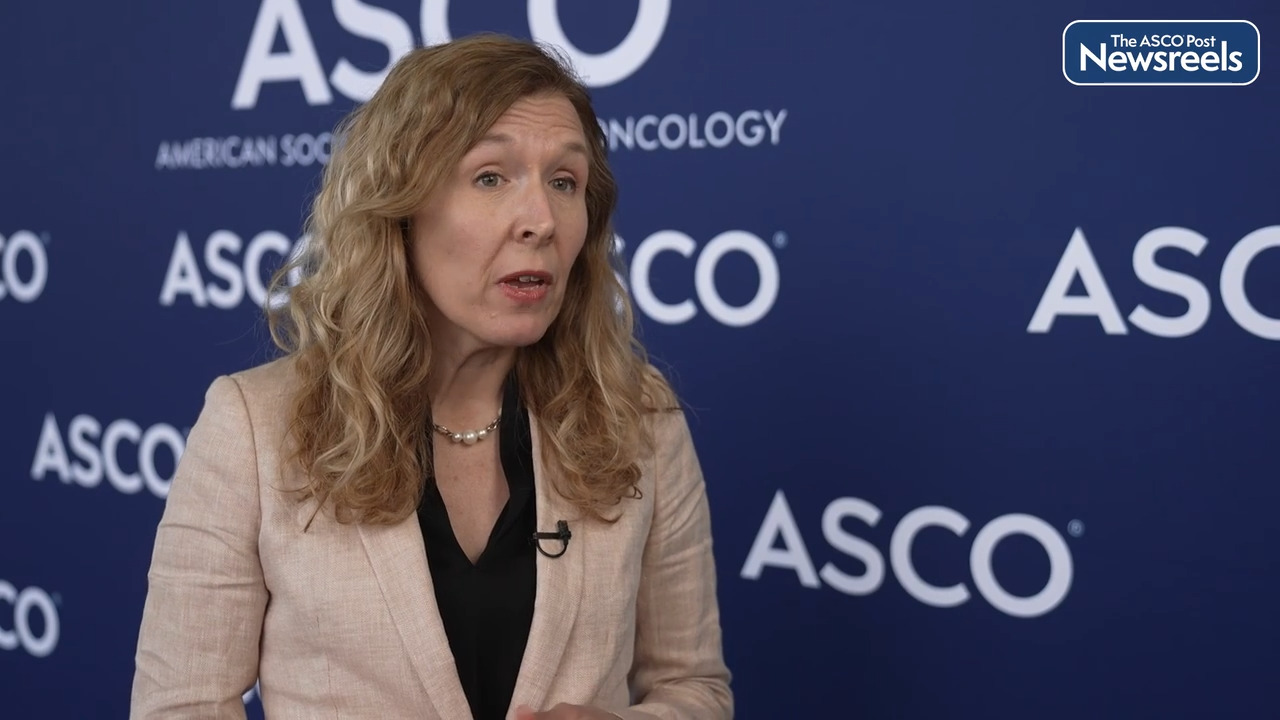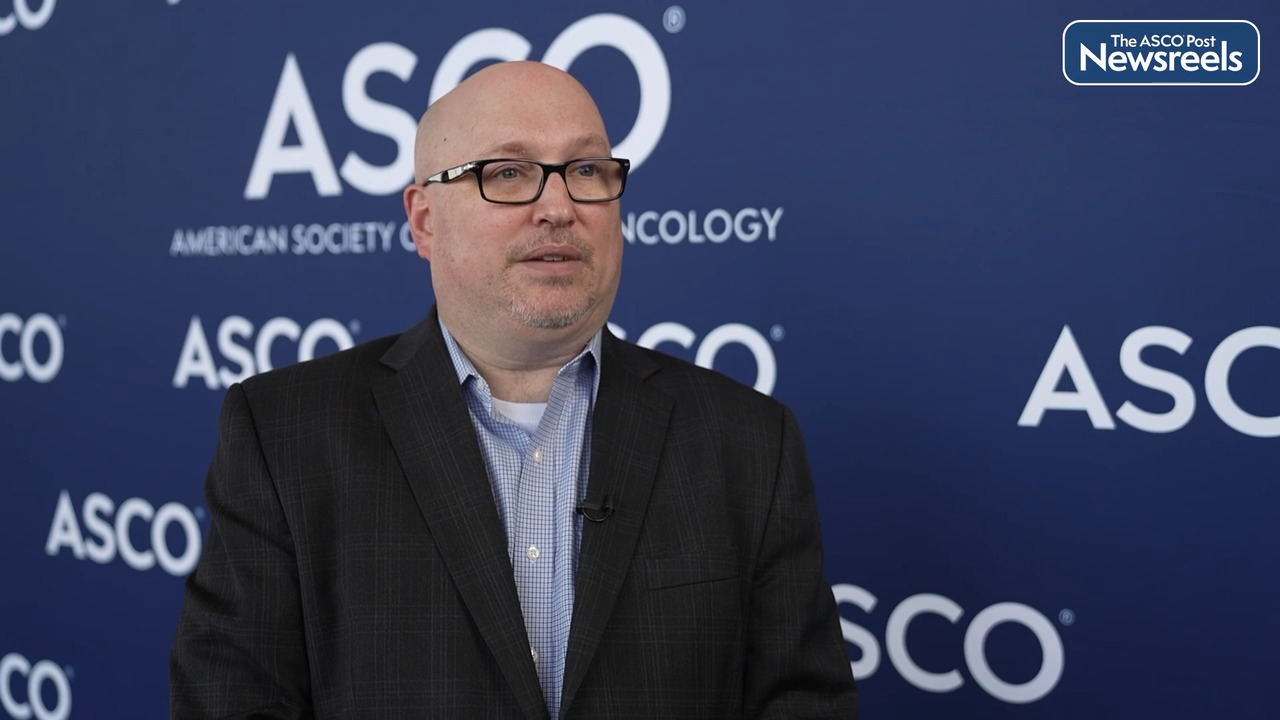Transcript
Disclaimer: This video transcript has not been proofread or edited and may contain errors.
Alicia K. Morgans:
Hi Praful, thank you so much for joining me to talk about the really interesting presentation that you gave at ASCO, the oral abstract on the ICECaP reanalysis. Can you tell me a little bit about it please?
Praful Ravi:
Yeah, thank you for having me here, Alicia. So ICECaP stands for, you probably know, Intermediate Clinical Endpoints in Cancer of the Prostate. What ICECaP is basically a repository of collections of individual patient data from randomized trials in localized disease. And what we sought to do in this particular piece of work is to look within this repository and identify whether a PSA level at a certain time point after completion of radiation could be prognostic.
Alicia K. Morgans:
That's so interesting, and tell me a little bit about the data set itself though. I mean this is a massive data set that you've used in the past to help us understand things like metastasis free survival, right?
Praful Ravi:
Exactly, so ICECaP was initiated more than a decade ago by Chris Sweeney, Wanling Xie from the Dana-Farber. And they've pulled together now more than 40 randomized trials in localized disease, radical prostatectomy trials, radiotherapy trials, salvage radiation trials. And as you mentioned in 2017, the paper came out which established the true surrogacy, not just prognostic, but actually sort of formal testing of surrogacy of METASTASis free survival for overall survival. That's really led to a sea change in how we do adjuvant trials. METASTASis free survival PFS is the accepted endpoint in most ongoing adjuvant trials and it's also accepted for regulatory purposes.
Alicia K. Morgans:
Absolutely. And in this analysis, you looked beyond that particular initial intermediate endpoint and you really looked at PSA nadir. Tell me a little bit about what exactly you were looking at, because you were bringing together lots of data.
Praful Ravi:
Exactly. So we are trying to see whether there was something even earlier than MFS. Because the whole point of developing MFS was to expedite the conduct of these prostate cancer trials in localized disease, which take years and years. So MFS has shortened that by a few years. We were trying to see something even earlier, a PSA level at six months after completion of radiation with or without ADT to see whether that could be prognostic. And that was the purpose of doing this because previous studies, particularly retrospective as well as some prior postdoc analysis of randomized trials, have shown that that level could indeed be prognostic. And the aim of this was to see whether this could hold up in the biggest data set examined to date.
Alicia K. Morgans:
Okay. So this is so important because when we're thinking about localized prostate cancer and trying to complete a trial with a primary endpoint, if that endpoint is 8, 10, 12, 20 years down the line, it's just not going to be feasible. So obviously PSA makes sense. And tell me, did you find that PSA six months after completing radiation was actually prognostic in this dataset?
Praful Ravi:
Yeah, in short, yes. We looked at 10,000 patients, 16 trials, median follow up was 10 years. And we looked at that PSA cut point of 0.1, less than 0.1, or greater than or equal to 0.1. And we basically examined what is the prognostic impact on MFS OS and prostate cancer death. And all three endpoints, this marker less than 0.1 was highly prognostic in patients getting radiation alone, radiation in short-term ADT, and radiation and long-term ADT.
Alicia K. Morgans:
Okay. So one thing that I think a viewer or someone who reads the paper that comes out is going to be thinking about is how did you make this happen when you actually had such distinct and different data sets, patient populations of course treated with radiation, but different durations of ADT and some not even receiving ADT. Obviously testosterone recoveries going to be different between these populations, but still were checking everybody at six months, post radiation. So tell us how do we wrap our heads around that?
Praful Ravi:
So in terms of the data, we had the individual patient data and the individual patient data has the PSAs. So it has all the list string of PSAs collected for every single patient on these trials, and we excluded those who didn't have that PSA follow up. So from 22 trials we only came down to 16 and from 10,700 patients, we cut out 300 odd to get to our final data set. Unfortunately, we didn't have testosterone data available, that's the limitation of the data set. There's been lots of questions around that because obviously testosterone recovery impacts what's going to happen to PSA. So we had the individual data available to look at all this and short term ADT was defined very simply as three to six months. Long term was 24 to 36 months. These trials were all testing these kinds of durations or different durations, different radiation techniques with ADT or without ADT. So that's how we kind of pulled together sort of different trials into sort of something that we could categorize into sort of three groups.
Alicia K. Morgans:
So I think it's nice to know that there were of course statistical tricks and things that could be done also to kind of pull things together, as you said, pulling those variables in using these really complex models. But it's important that regardless of how people got to this nadir, regardless of that treatment, regardless of the ADT, regardless of testosterone, cause we didn't even have that information. This was a prognostic number. Now tell me how many patients or what proportion of patients in each group approximately made it to that nadir?
Praful Ravi:
So in the radiation alone, it was very low. At six months after completion of radiation, if you just had radiation alone it was 2%. It was 16% if you had short-term ADT and 23% with long-term ADT. So the numbers in terms of the proportions relatively small. Now that being said, a large or fair number of patients had a 0.1 exactly. So they were counted in the greater than or equal to. So if you're just looking at the less than it was small, if you probably did less than or equal to it would be bigger. But the way we did it was less than or greater than or equal to.
Alicia K. Morgans:
So to that point, how did you choose that less than rather than or equal to?
Praful Ravi:
You know to some degree, it's somewhat arbitrary, I'll be honest. But previous studies have looked at that less than 0.1, that's what we saw to replicate. Also, if you're the duration... The era's during which these trials were conducted, the PSA sensitivity or the assay sensitivity for PSA was around 0.1. Nowadays, we have 0.02 less than than 0.02 is sort of undetectable, and 0.02 and above is detectable. In those areas 0.1 was the number of the assay limit. That's why we chose 0.1 less than 0.1. And also because that's what's been shown in prior data as well.
Alicia K. Morgans:
Okay. So all of the assays though, were able to mark as a less than 0.1 though?
Praful Ravi:
Yes.
Alicia K. Morgans:
None of them were 0.1 and sort of stopped there.
Praful Ravi:
Exactly.
Alicia K. Morgans:
Which is important, and that's good. So if you have to think about the clinical implications of this, because it is such a large data set and maybe it's not a clinical implication, but more a trial design implication, what would that be?
Praful Ravi:
Yeah, I will agree with you. I mean, clinically this guides us in counseling patients, we look at that PSA value after radiation with ADT typically. And we, this confirms what we sort of know, the lower the PSA gets to the better is. But really the implication is for design of trials moving forward. One potential implication is can we intensify or de intensify based on achievement of that favorable PSA nadir. Particularly in the patients getting long-term ADT for high risk disease. That's really where the outcomes... We need to improve outcomes, cure rates. So for example, if patients get to that favorable PSA nadir, can we deescalate, can we stop the ADT at that point versus continue on for two years or three years as planned?
Similarly, if we don't get to that nadir, do we need to escalate and add in another agent? We have several novel hormone agents. Can we add those into intensified beyond that. One such trial was attempted, unfortunately, it's closed for accrual, was an addition of abiraterone bicalutamide at that six to eight month mark for several reasons it closed down. But perhaps this kind of work can sort of intensify efforts or re-engage investigators to look at these kinds of trials.
Alicia K. Morgans:
So if you had to sum it all up and give the viewers a final word on this particular ICECaP analysis. Have you moved the needle... What are you telling us today?
Praful Ravi:
Basically PSA at that six month mark is highly prognostic. And we could use that in our clinical practice, but I think we need to take this forward to look at it in further trials, intensifying de intensifying as we've just said. And also maybe to look at novel systemic agents upfront. And maybe we can use this as a very early marker, surrogate marker. Not a true surrogate endpoint, a surrogate marker of efficacy. And we could take forward some of these novel agents based on how well they bring that PSA down into larger trials. But more work is needed if we're going to really establish this as a true surrogate endpoint of MFS or OS.
Alicia K. Morgans:
Wonderful. Well congratulations to you and the team, this is a monumentus amount of work and I really appreciate of course, the work you've done and the time that you've taken today. Thank you.
Praful Ravi:
Thank you very much.





